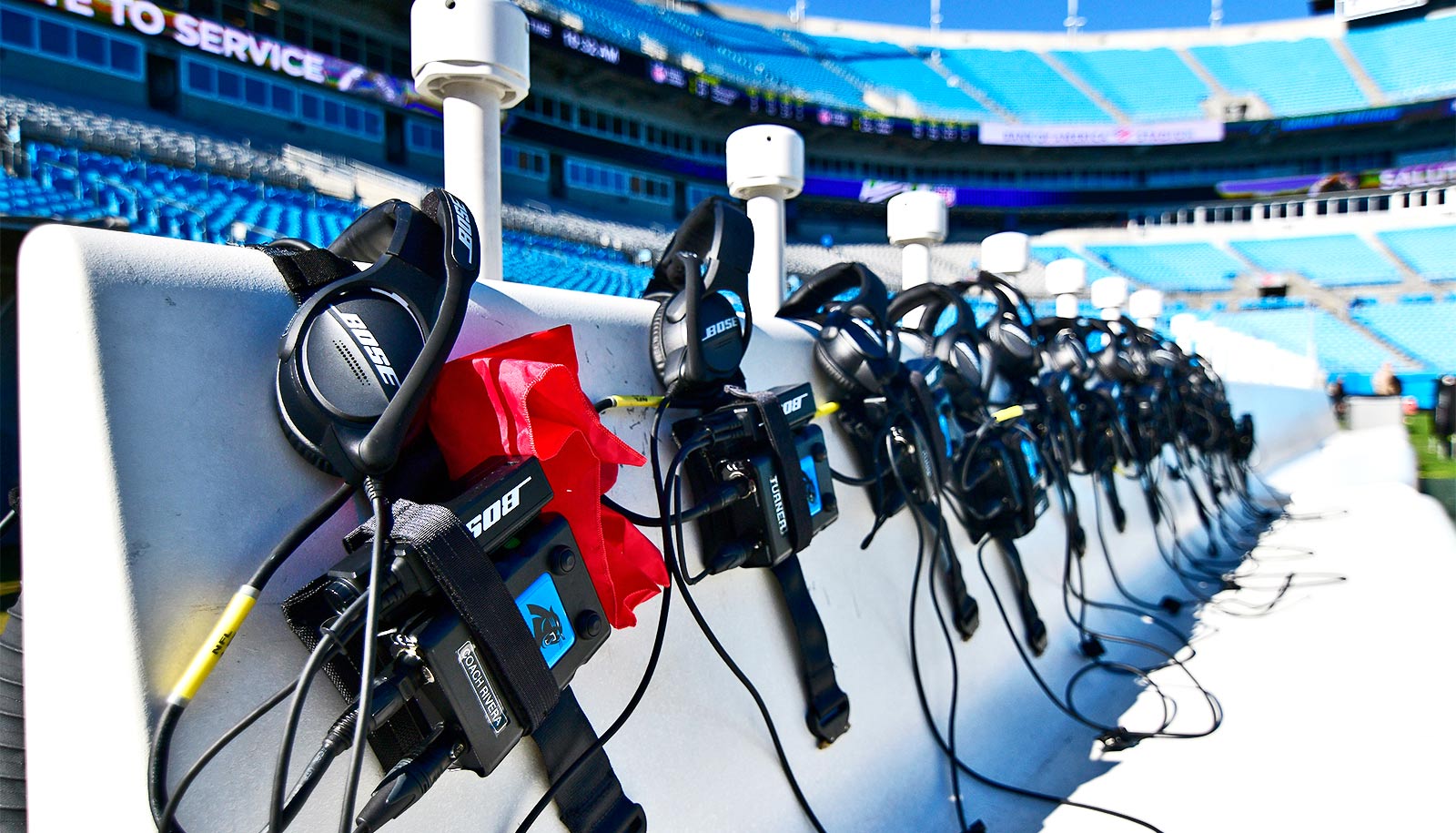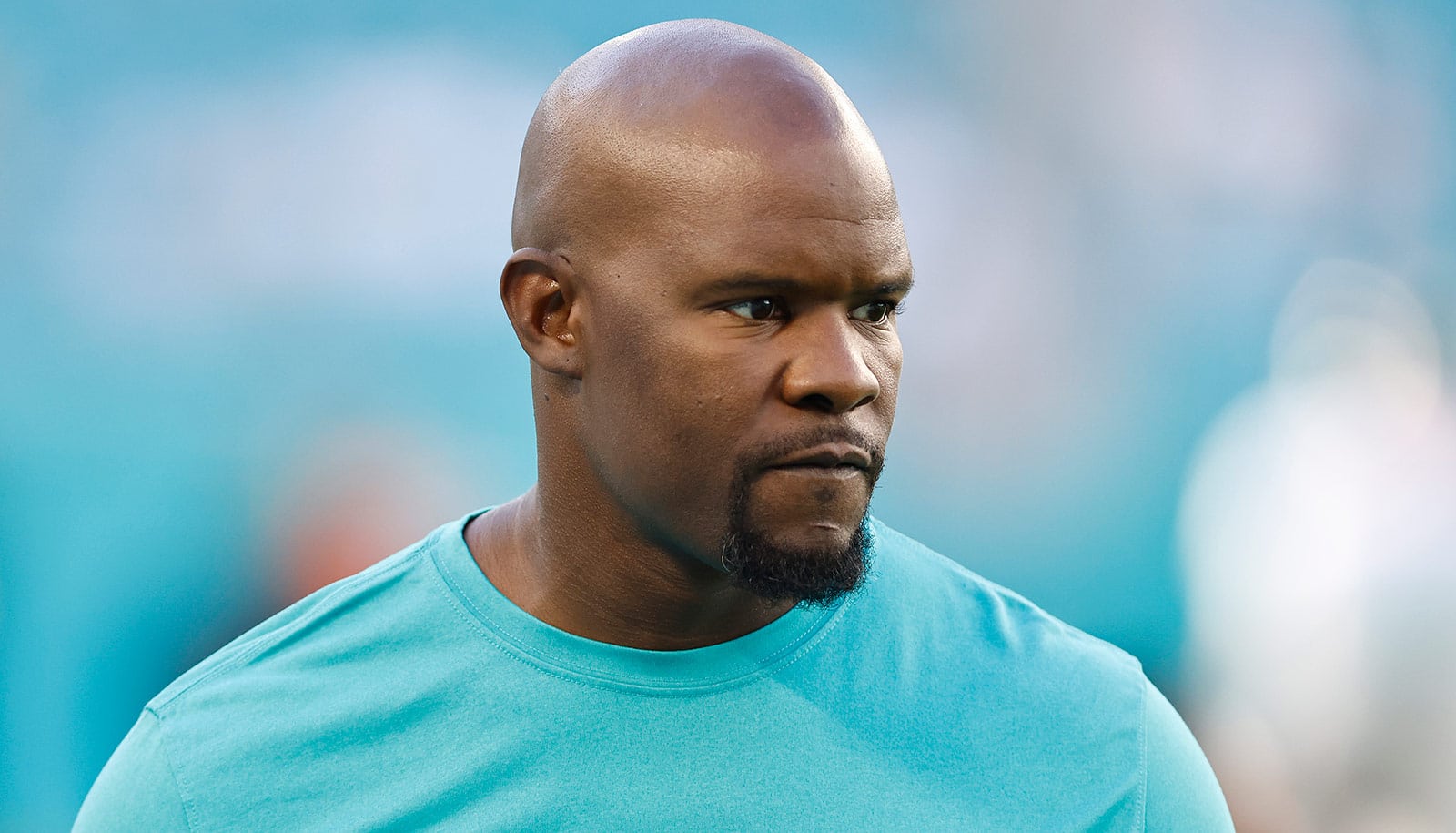
“The lower level feeds the top. If bias is embedded in the entire process, then it’s difficult to get the most capable candidates into the pool for the top position,” says Andreas Schwab. (Credit: Grant Halverson/Getty Images )
There’s racial bias in lower-level NFL coach hiring and promoting
“These data analyses show where biases are hiding, and once we know that, we can think about interventions..."
To address a lack of head coaches of color in the National Football League, management must first fix the problem at lower levels of coaching, new research shows.
Twenty years ago, the NFL adopted the Rooney Rule which attempted to address racial disparity in top positions by requiring teams to interview at least one person of color for every head coach opening.
The new study suggests the gap will persist unless it’s closed at the bottom. The NFL has a hierarchal labor pool, says Andreas Schwab, associate professor of entrepreneurship at Iowa State University and coauthor of the study in the American Journal of Sociology .
Under the head coach are two coordinators who oversee defense and offense. These coordinators supervise position-specific coaches who may have their own assistant coaches.
“To become a head coach , individuals need to move through the ranks. This paper shows that where you start in the hierarchy of coaching matters because the likelihood that coaches in that position get promoted to the next level differs,” Schwab says.
The researchers found 79% of the promotions to head coach were from the coordinator position. While the data shows no racial disparity in promotions from coordinator to head coach, white coaches were twice as likely to be promoted from a lower-level position to a coordinator position.
“Beyond providing entertainment, the NFL can help us as a society to better understand and manage employee hiring and promotion processes.”
“The lower level feeds the top. If bias is embedded in the entire process, then it’s difficult to get the most capable candidates into the pool for the top position,” he says.
The researchers collected and analyzed the career history data of more than 1,300 NFL coaches from all 32 teams between 1985 and 2015. They compared coaches who played the same position, started their careers coaching the same position, and performed equivalently based on a wide-range of objective performance measures, including:
- Percentage of games won by the team when the coach had a chance of being promoted
- Offensive or defensive performance related to each coach’s primary responsibilities
- Coaching position-specific performance based on 52 metrics
The researchers also ruled out alternative explanations based on remaining differences between teams and coaches. This included whether coaches had worked for a team that went to the Super Bowl and had relatives who also coached in the NFL.
Taking all these factors into account, the researchers found persistent racial bias in both the hiring and promoting of lower-level coaches.
“These data analyses show where biases are hiding, and once we know that, we can think about interventions and measure their effectiveness,” says Schwab.
The researchers say parity will be achieved only by rewarding coaches equally with promotions at the earliest stages of their careers. But Schwab emphasizes that there are no easy, quick fixes and any intervention requires adequate time to have an effect.
Schwab says the NFL offers a unique opportunity to study bias in organizations. Along with a large amount of objective performance data, it provides transparency in the hiring, firing, and promoting of coaching staff for an entire industry.
In other industries, a lack of data and more subjective performance metrics often prevent solid statistical analyses of employee careers, even though biases are likely “just as relevant in other organizations,” says Schwab.
“Beyond providing entertainment, the NFL can help us as a society to better understand and manage employee hiring and promotion processes,” Schwab says.
Additional coauthors are from the University of Michigan, George Washington University, Emory University.
Source: Iowa State University
The post There’s racial bias in lower-level NFL coach hiring and promoting appeared first on Futurity .
Share this article:
This article uses material from the Futurity article, and is licenced under a CC BY-SA 4.0 International License. Images, videos and audio are available under their respective licenses.
Related Articles:
Expert: Flores lawsuit against NFL could spark change
Feb. 9, 2022 • futurityCan ‘feminist design’ save hiring algorithms from bias?
Feb. 10, 2020 • futurityLinks/images:
- https://doi.org/10.1086/725389
- https://www.futurity.org/flores-lawsuit-nfl-2694352-2/
- https://www.futurity.org/nfl-kneeling-during-the-national-anthem-1767022-2/
- https://www.news.iastate.edu/news/2023/08/21/nfl-coaches
- https://www.futurity.org/nfl-coaches-racial-bias-2962892/
- https://www.futurity.org


